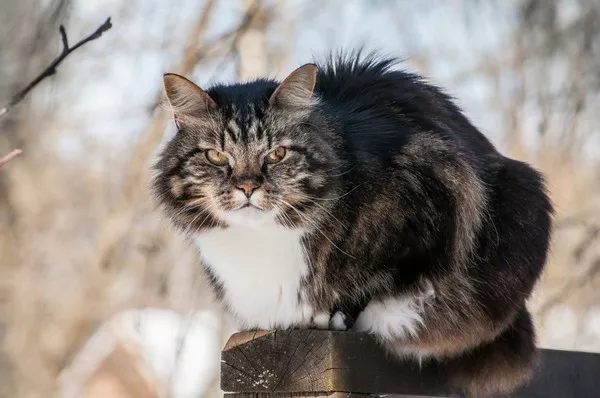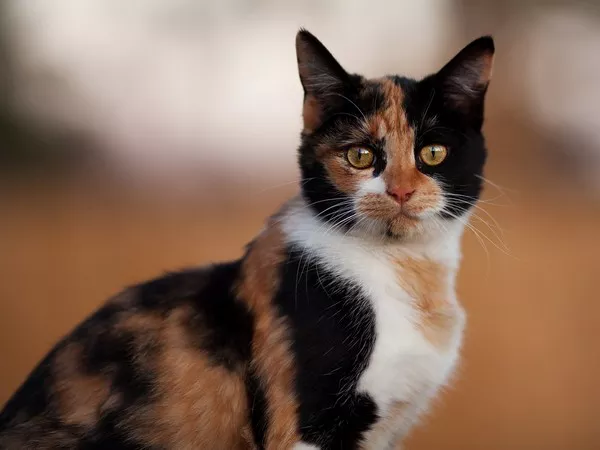Norwegian Forest Cats, known for their majestic appearance and thick, luxurious coats, have captivated the hearts of cat enthusiasts worldwide. Originating from the cold and rugged landscapes of Norway, these enigmatic felines boast a fascinating history and unique characteristics that set them apart from other cat breeds. In this article, we delve into the question of whether Norwegian Forest Cats are truly rare and explore the factors that contribute to their allure.
A Historical Journey
The history of Norwegian Forest Cats traces back to Norse mythology, where they were revered as mythical creatures known as “skogkatt.” These cats were believed to be the chosen companions of the Norse goddess Freyja, who was associated with fertility, love, and beauty. Over time, these felines became an integral part of Norse culture and were even featured in Viking folklore.
Despite their historical significance, the Norwegian Forest Cat faced challenges in the Middle Ages when they were nearly driven to extinction due to harsh weather conditions and changing landscapes. However, their survival instincts and natural adaptability allowed them to thrive in Norway’s dense forests and mountainous regions, giving rise to their name “Norwegian Forest Cat.”
Rare or Not? Understanding Numbers
Determining the rarity of a cat breed can be a complex task, as it depends on various factors such as population size, geographical distribution, and breed recognition. While Norwegian Forest Cats were once considered rare due to their limited presence outside of Norway, they have gained popularity globally in recent years.
The International Cat Association (TICA) and the Cat Fanciers’ Association (CFA) both recognize Norwegian Forest Cats as an official breed. This recognition has significantly contributed to an increase in the breed’s popularity and, consequently, its numbers.
Breed Characteristics
Norwegian Forest Cats are distinguishable by their large, well-muscled bodies, tufted ears, and bushy tails. Their semi-long fur consists of a water-repellent topcoat and a thick undercoat, a feature developed to withstand Norway’s cold and wet climate. Additionally, their almond-shaped eyes, available in various colors, further add to their captivating appearance.
In terms of temperament, Norwegian Forest Cats are known for their gentle and friendly nature. They are intelligent and enjoy interacting with their human family members, making them excellent companions.
Factors Contributing to Their Popularity
Several factors have contributed to the growing popularity of Norwegian Forest Cats:
1. Unique Appearance: The breed’s striking appearance, resembling a wild and mystical creature, has attracted cat lovers seeking a distinctive and exotic pet.
2. Social Media and the Internet: The rise of social media platforms and online cat communities has allowed the sharing of cute and endearing images and videos of Norwegian Forest Cats. This exposure has piqued the interest of potential cat owners.
3. Affectionate Temperament: The breed’s affectionate and sociable nature appeals to families and individuals looking for a loving and interactive companion.
4. Hypoallergenic Qualities: Some people with allergies find that they can tolerate Norwegian Forest Cats better than other breeds, leading them to become a preferred choice for allergy sufferers.
5. Low Maintenance Grooming: Despite their luxurious coat, Norwegian Forest Cats require relatively low grooming compared to other long-haired breeds, making them attractive to those seeking a beautiful cat without excessive grooming demands.
Breeding and Conservation Efforts
As the popularity of Norwegian Forest Cats has grown, responsible breeding practices have become essential to maintain the breed’s health and preserve its unique traits. Reputable breeders focus on maintaining the breed’s authenticity, health, and temperament while adhering to ethical guidelines set by feline welfare organizations.
Moreover, Norway’s native cat breed is now receiving increased attention from conservationists, who recognize its significance in the country’s cultural heritage. Efforts are being made to protect and sustain the breed’s genetic diversity, ensuring the Norwegian Forest Cat remains an integral part of Norway’s natural and cultural landscape.
Conclusion
While Norwegian Forest Cats were once considered rare, their popularity has surged in recent years, making them more accessible to cat enthusiasts worldwide. Their captivating history, unique appearance, and friendly nature have contributed to their growing appeal as pets. However, despite their increased presence, it is essential to continue supporting responsible breeding practices and conservation efforts to ensure the longevity and well-being of this magnificent feline breed for generations to come.

























